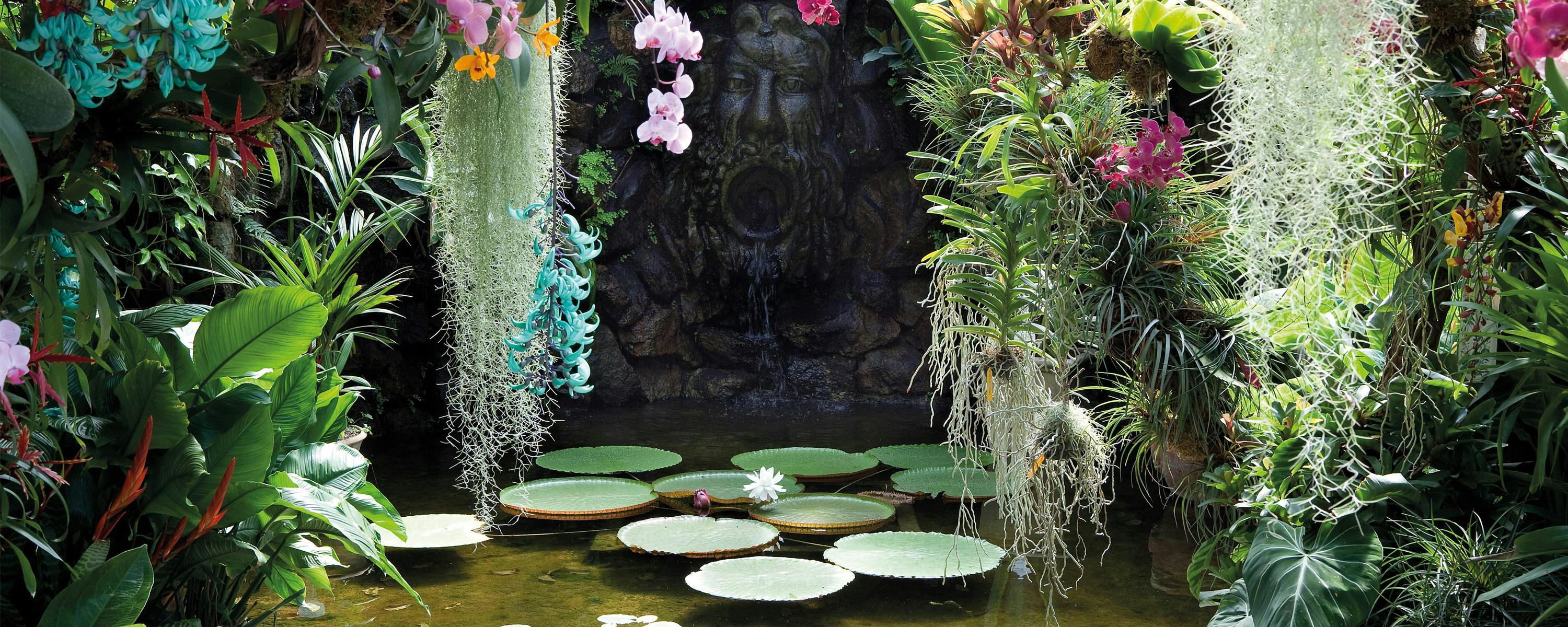the essence of paradise
A magnificent volume gathers the suggestions from great Italian gardens. Delfina Rattazzi, author of the essay that enriches the publication and a dear friend of Forte, tells us about it
Words Silvia M.C. Senette - Photography courtesy of Franco Maria Ricci Editore
It is an unusual and fascinating journey that, in almost three hundred pages together with splendid images, invites you to discover the green magnificence scattered throughout Italy and cataloged in the volume “Grandi Giardini Italiani - L’essenza del Paradiso” published by Franco Maria Ricci Editore. A tribute, created to celebrate the 25th anniversary of the Grandi Giardini Italiani network, which blends nature, art and history in a literary anthology enhancing the cultural heritage of the country. Author and journalist Delfina Rattazzi, an heir of the Agnelli dynasty and habitué of Forte dei Marmi, of which she has “green” memories linked to childhood has written the text, along with the founder of the network Judith Wade.
“I grew up among the perfumes of plants that love to breathe the sea breeze: santolina and helichrysum, thyme and pittosporum. And the sea lilies: they grow in some beach clubs in Forte dei Marmi and give off their characteristic scent which becomes more intense in the evening”, reveals the author. “I remember the dunes covered with gray foliage eryngium that sprouted from the golden sand during my childhood; wild plants that are protected today which help to anchor the dunes and which survive with very little water”.
An open-air Eden that, in Delfina Rattazzi’s memories, has the same charm as exotic and hidden gardens, Renaissance and Baroque flower beds or botanical gardens and the “sacred woods” discovered in her latest editorial adventure. Many are found in Tuscany. “In addition to the recently sumptuously restored Marlia Villa Reale, and Villa Bardini, with its baroque staircase and charm that has remained unchanged over the centuries, we find the ingenious Collodi Garden near Lucca”, lists the writer. “In the hills of Fiesole, there is the park of the Villa Peyron at Bosco di Fontelucente, with a surprising Italian garden trimmed in the form of small haystacks, with rose bushes that grow between one border and another. Near Montepulciano, the Park of Villa Trecci flourishes, where native species and plants with grey foliage with a Mediterranean spirit thrive: in the garden only Tuscan roses grow in the soft shade of centuries-old olive trees”.
Isola Madre, Stresa (Verbania)
Villa Arconati, Bollate (Milano)
I grew up among the perfumes of plants that love to breathe the sea breeze: santolina and helichrysum, thyme and pittosporum. And the sea lilies: they grow in some beach clubs in Forte dei Marmi and give off their characteristic scent which becomes more intense in the evening
The author’s advice betrays her deep passion for botany. “If you love irises, the place to visit is Villa La Massa, on the banks of the Arno in Florence. In Tuscany, the iris grows in nature, where the Mediterranean scrub perfumes the air with junipers and all the varieties of aromatic plants that create it”. Once again her thoughts fly to her beloved Versilia. “At Forte, under the pine trees, hydrangeas were grown, the leitmotif of the summers when I was young. My mother also planted many in Argentario, where she later discovered other interesting plants: from banksia roses to camellias, from camedrio to scabiosa, from Chinese roses to echinops. She created a dense and fragrant paradise bordered by rosemary hedges and dined under pergola covered with passion flower. My mother was very proud of her marsh hibiscus, with petals that looked like they were hand-painted in mottled purple and white”.
Her passion for plants is a family gift. “My mother Suni (Susanna Agnelli, ed) always took me to visit gardens since I was little: up the stairs of La Mortella, in Ischia, or to the San Michele garden, in Capri. And then Ravello, the Reggia of Caserta, the Landriana, the gardens around Florence and Rome. My aunt Marella was also a real enthusiast”, the writer tells us. “In Marrakech she created a space of rare beauty that left you breathless. However, I am happy with my two small terraces in Milan where I never stop experimenting”.
On the other hand, being co-author of the glossy volume on the “Grandi Giardini Italiani” proved to be a precious opportunity to discover secret glimpses of the peninsula. “It is the variety of spaces that makes Italy unique,” she explains. “From the luxurious grassy expanses on the lakes at the edge of the Alps passing through Tuscia, where high-ranking prelates have left enchanting works, our country is rich in unique works. We pass from Italian gardens that have remained intact for centuries to the disturbing statues of the Bomarzo’s Sacred Wood, to Sicily’s majestic ice plants and the botanical gardens that preserve our biodiversity”. A paradise unknown to most that would be worth getting to know, to be surprised and inebriated by so much beauty, Mother Nature’s daughter.
Villa Lante, Bagnaia (Viterbo)
Giardini La Mortella, Forio d’Ischia - Isola d’Ischia (Napoli)
THE BOOK
Grandi Giardini Italiani
L’essenza del Paradiso
Franco Maria Ricci editore
Pages: 276
Size: 28,5 x 30 cm
Texts by Judith Wade, Delfina Rattazzi and Caterina Napoleone
